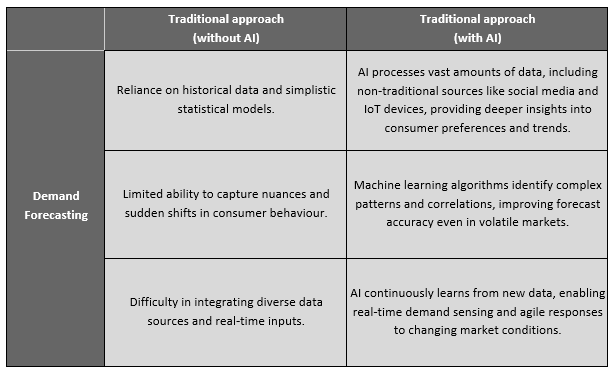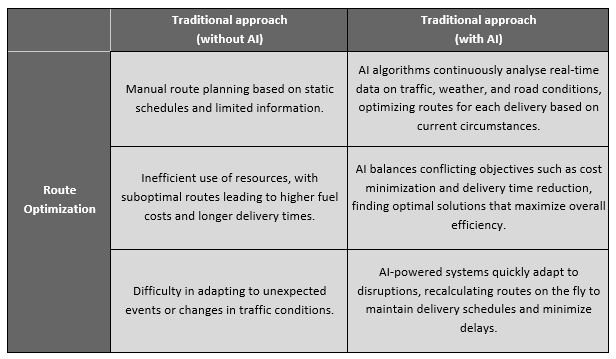Leveraging IoT and AI for Demand Forecasting and Route Optimization in Logistics
15/03/2024, Zerynth, Italy
In the realm of logistics, efficiency is paramount. Every delay, misstep, or miscalculation can have cascading effects, impacting not just the bottom line but also customer satisfaction. In recent years, the integration of Artificial Intelligence (AI) has revolutionized the way logistics companies operate. Specifically, AI's role in demand forecasting and route optimization has emerged as a game-changer, enabling businesses to streamline operations, minimize costs, and enhance overall performance.
In particular, by harnessing the power of data analytics, machine learning, and optimization algorithms, businesses can unlock new levels of efficiency, agility, and competitiveness.
Demand Forecasting with IoT and AI
Accurate demand forecasting is the cornerstone of effective logistics management. Traditionally, forecasting relied heavily on historical data and statistical models, often falling short in capturing the complexities of modern supply chains. AI, however, brings a new level of sophistication to this process. Let’ s have a look at the impact on AI on very specific aspect characterizing demand forecasting process:
- Data-driven Insights – AI algorithms excel at processing vast amounts of data from various sources in real-time. By analysing factors such as historical sales data, market trends, weather patterns, social media sentiment, and even geopolitical events, AI can provide deeper insights into demand patterns. This granular understanding enables businesses to anticipate fluctuations in demand with greater precision.
- Predictive Analytics – Through machine learning techniques, AI can identify hidden patterns and correlations within datasets that human analysts might overlook. By continuously learning from new data inputs, AI-powered forecasting models become more accurate over time, adapting to evolving market dynamics and consumer behaviours.
- Demand Sensing – AI enables real-time demand sensing, allowing companies to detect sudden shifts in demand patterns promptly. By integrating data streams from IoT devices, point-of-sale systems, and supply chain sensors, AI can provide up-to-the-minute insights, enabling agile responses to changing market conditions.
Route Optimization with IoT and AI:
As to leveraging AI in route optimization practises, instead, once demand forecasts are established, the next challenge lies in optimizing logistics routes to fulfill orders efficiently. Manual route planning is often time-consuming and prone to human error, leading to suboptimal outcomes. AI-driven route optimization offers a smarter approach. Similarly to what done above discussion about demand forecasting, let’s illustrate the main advantages in leveraging AI also in route optimization process:
- Dynamic Routing – AI algorithms can dynamically adjust delivery routes based on real-time factors such as traffic conditions, road closures, and weather forecasts. By continuously analysing data from GPS trackers, traffic cameras, and mapping services, AI optimizes routes on the fly, minimizing travel time and fuel consumption.
- Multi-objective Optimization – Route optimization involves balancing multiple objectives, such as minimizing transportation costs, reducing delivery times, and maximizing vehicle capacity utilization. AI employs optimization algorithms that consider these conflicting objectives simultaneously, finding the most efficient trade-offs to achieve overall performance improvements.
- Adaptive Planning – In a dynamic logistics environment, plans often need to be adjusted on short notice due to unforeseen circumstances. AI-powered route optimization systems can rapidly recalculate routes in response to disruptions, ensuring that deliveries remain on schedule despite challenges such as traffic accidents or last-minute order changes.
The following two tables highlight the main advantages in applying IoT and AI to both demand forecasting and route optimization, contrasting them with traditional approaches:

Some results: AI-driven route optimization reduces fuel consumption by up to 20% and decreases delivery times by 15%, resulting in significant cost savings and improved customer service levels.

Some results: AI-driven demand forecasting enables businesses to reduce forecast errors by up to 30%, leading to better inventory management, reduced stockouts, and improved customer satisfaction.
By highlighting these specific improvements, it becomes clear how AI transforms traditional logistics practices, driving tangible benefits in terms of efficiency, cost-effectiveness, and responsiveness to market dynamics.
Whether it's predicting consumer demand with unprecedented accuracy or orchestrating complex delivery networks with precision, AI empowers logistics companies to stay ahead in an ever-evolving marketplace. As technology continues to advance, the synergy between AI and logistics will undoubtedly drive further innovation and transformation in the industry.
